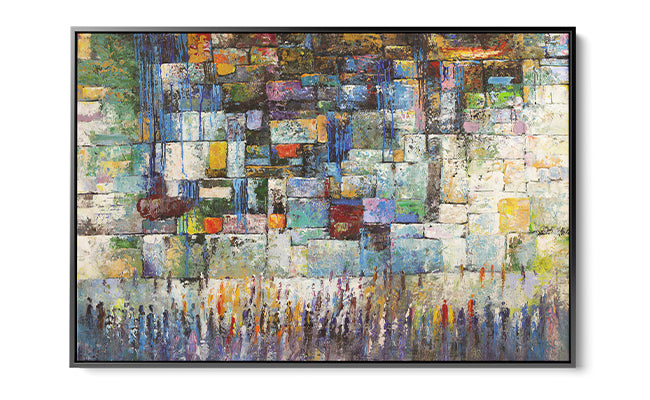About Us
Art is soul. Art is life. Art is memory. Art is hope. And hope springs eternal – even if it has to wander and cross oceans to find a new home. So it is with the Ben-Ari gallery. Our story begins in Tunis, North Africa, home to my family for almost 2000 years. Carthaginian, Roman, Vandal, Byzantine, Berbers, Arab and French Conquerors came and went, but my family remained, and from it sprang my grandfather, a famous artist in his time, who blended the traditions and life of his Jewish community with the austere landscapes of the Maghreb and the sophisticated techniques he studied in Paris to dazzle all who came to his gallery.
Then the Nazis came. In 1943, trying to preempt the Anglo-American liberation of North Africa, they took over Tunis and brought their hatred to the Ancient city. My Grandfather's gallery, like many other Jewish properties, was looted and razed, and almost all of his work was lost. He did not long survive the loss.
But his sons and daughters did. Forced to flee their homes in the 1950s, they brought their memories of the Jewish Quarter, the souks of Tunis, and the Atlas Mountains, to distant shores. Following a sojourn in France, the family made its home in newly independent Israel, where my father was born. It was a harsh, unforgiving time, in a harsh, unforgiving lad, in a city which was simultaneously the capital of the avowedly secular state of Israel, the focus of the religious yearnings and activity of the Jewish people and the other Abrahamic faiths, and also an often-deadly frontier in the unending Arab-Israeli War, a war which had left the city partitioned by barbed wire and trigger-happy Jordanian soldiers. It was not a time for artists or tradition, said the state. It was a time for soldiers, and workers, and doers. A stark austerity regime, lasting deep into the 1950s, ensured all of the refugees flooding Israel from the charnel house of Europe and from the hostile populations of the newly independent Arab States had, barely, enough to eat, and a roof over their head. A universal service conscript army guarded the vulnerable borders from vengeful enemies and let wounded souls and bodies recover from the trauma of Genocide and dispossession. And all the State demanded in return was everything – a life of hard work and military service.
And so, father suppressed whatever artistic leanings he might have had, just as he and his generation largely put aside our religious and cultural traditions. Instead, he turned his hands to practical metalwork, only occasionally giving in to his deepest desires and turning a solid grate into a decorative embellishment to a lucky home. He worked his fingers to the bone so that we would have a life, have a future brighter than he did. And so it was, when I rediscovered my grandfather's legacy and my own artistic talent and inclinations as a child that my stolid father, the metalworker, encouraged me on my chosen path. When I walked down King David Boulevard with my friends and gaped at the beauty of the Judaica artwork displayed for those making their way to Jerusalem from all over the world, he quietly assured me that one day I too would create such beauty – and even own my own gallery.
And so it was. After a long and winding road, I found my way back to the heritage of my family and my people and studied and practiced bringing it to lie on canvas. The result is the Ben-Ari Gallery you see before you, on the banks of the Hudson River in New York City.
Here, we display artwork depicting the life and tradition of the Jewish People. This includes portraits of the great personalities of Jewish History, secular and religious, the holy places, and more. The original paintings are available for sale, as are canvas, metallic and acrylic prints, including brushstroke prints almost indistinguishable from the original. In addition, the site contains a rich and original category of sukkah decorations printed in a variety of sizes and shapes, including -large prints on fabric, pvc, paper and lamination.
The Ben-Ari Gallery is about more than adorning your home with works of beauty. It is about strengthening the bonds of common memory and tradition. Of finding new ways to connect with the shared memory of the Jewish People.



